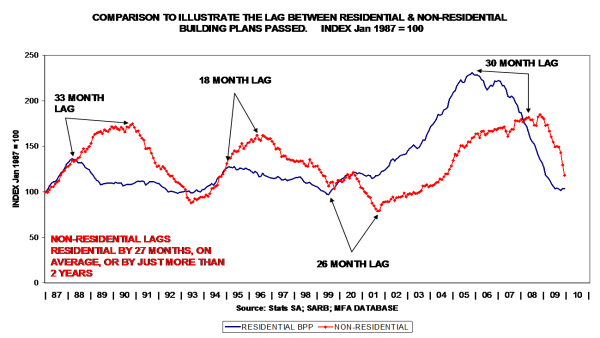The residential sector suffered a severe downturn in 2008/09 because:
1. Interest rates were raised in mid 2006 to help combat inflation
2. The National Credit Act came in during July 2007, constraining lending
3. The global financial crisis struck in Sept / Oct 2008 and banks tightened their lending criteria quite severely.
In a research report, the J P Morgan investment bank calculated that the tightening of lending criteria had a similar effect on the housing industry as would have been the case if interest rates had risen by 3 percentage points. With interest rates having dropped by 5.5 percentage points since Dec 2008, this implies that the housing industry has effectively only benefited from a 2.5 percentage point drop in interest rates since Dec 2008. The net effect has been to deepen and prolong the homebuilding recession.
The latest June 2010 data were fairly similar to those for May 2010. It seems as if certain segments of the market are forming a trough.
Driving forces: The Cost of Money
Two blows struck the private housing industry in 2007/08 … but it seems that it is responding belatedly to lower interest rates as low current levels are now being compared to low levels a year ago:

Driving forces: The Availability of Money
This graph shows that – normally - mortgage finance rises when interest rates drop. Mortgage finance drops when interest rates rise. These mortgage finance data lag by three months, but it seems as if it has now hit rock bottom.
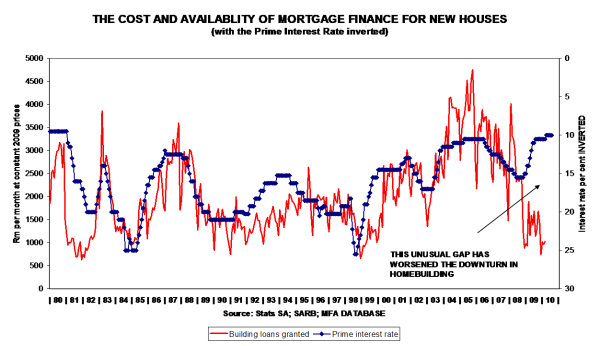
It seems as if BPP has hit rock bottom... currently 1 130

Dwelling houses are forming a through...

Townhouses and flats also seem to be approaching a trough at a very low level.
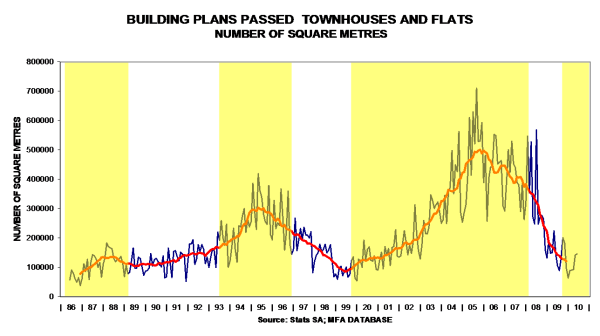
Another through in process?

Observe the gradual downtrend in sizes of townhouses and flats

The building cost of townhouses and flats seems to have stabilised between R400 000 and R500 000 per unit, with the potential to rise further from the current R450 000 per unit.
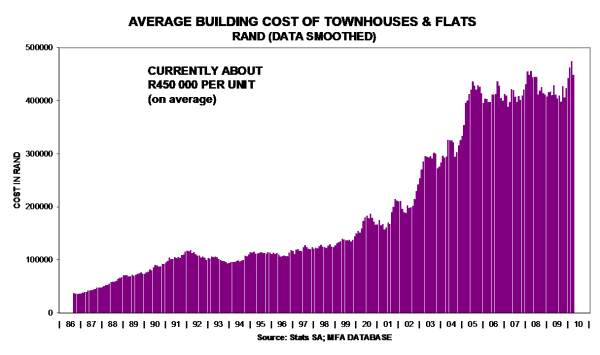
The demand for new office space has dropped to extremely low levels... could this segment also be forming a trough?
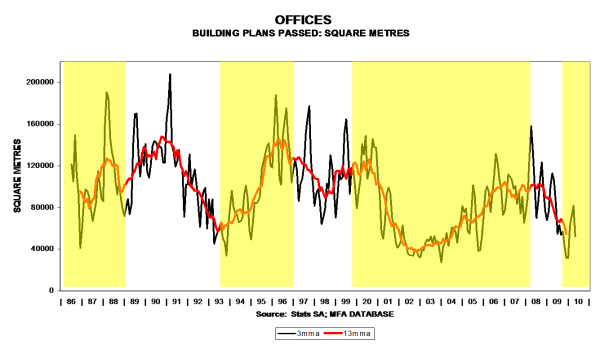
According to SAPOA, office vacancies have stabilised
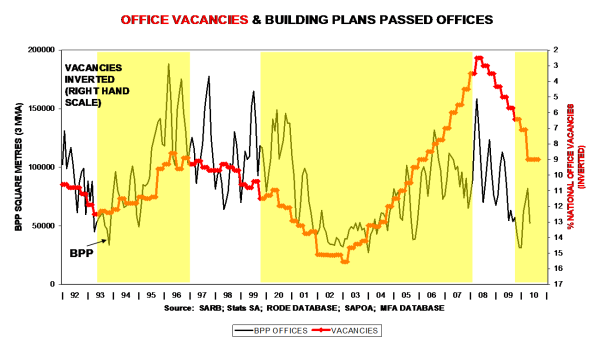
Definate signs of over-building... still on downtrend:
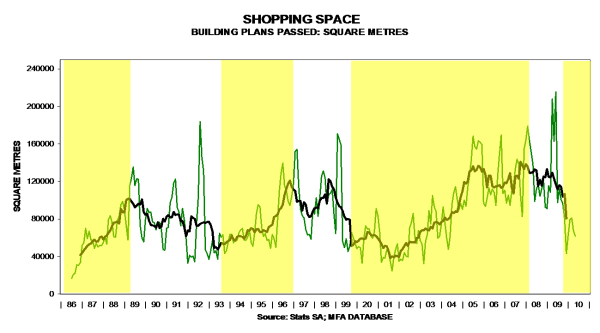
With manufacturing production improving by almost 9% year-on-year in June 2010, could this be the trough of the Industrial cycle?
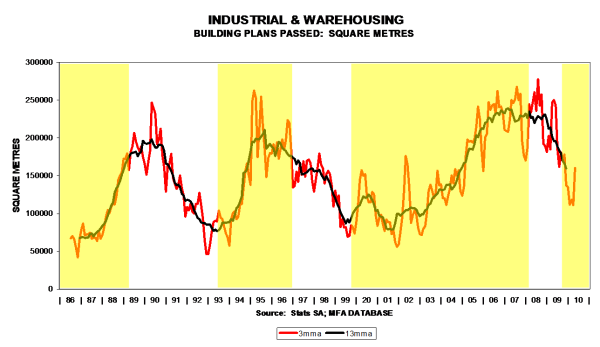
According to Rode & Associates, industrial vacancies seem to have stabilised

Little sign of improvement:
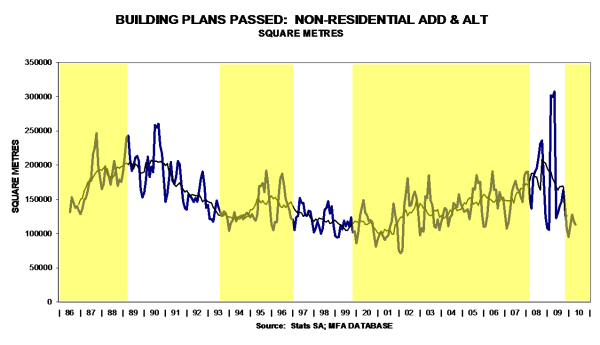
Could we be approaching the lower turning point in terms of square metres? Initial signs of a trough are evident:
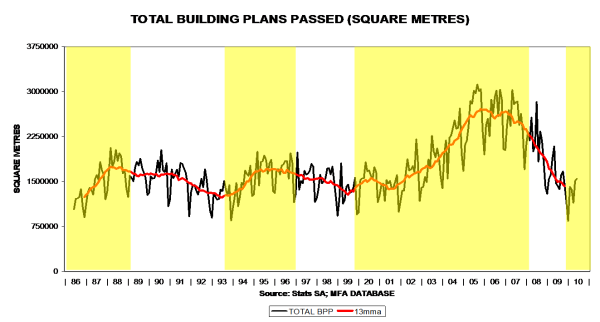
Each segment needs to be compared to itself to identify long term cyclical trends: all are still downward, with townhouses & flats having risen and fallen most since 2009. Are square metres of houses bottoming out?

Total residential plans passed and buildings completed (in deflated value terms) are still performing poorly, but initial signs of a bottoming out are starting to appear.
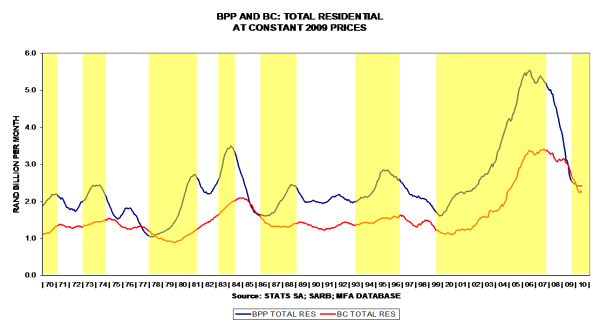
Non-residential BPP is expected to drop further in 2010/2011 and a revival can only be expected late in 2012:

BPP seems volatile, whilst BC is a lagging indicator that could drop further:
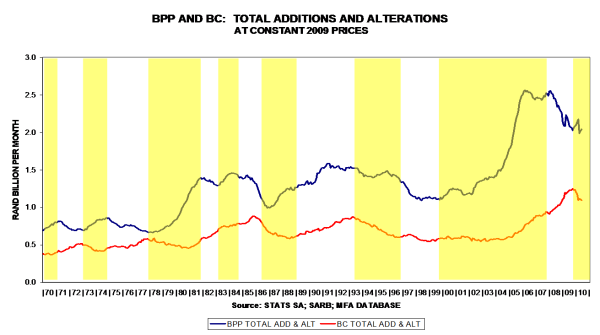
Both indicators are still performing poorly, but a drop in the early part of an economic growth phase seems part of the normal pattern.

The lags evident in these indicators suggest that the residential sector could bottom out during 2010, but that the non-residential could still drop further.
